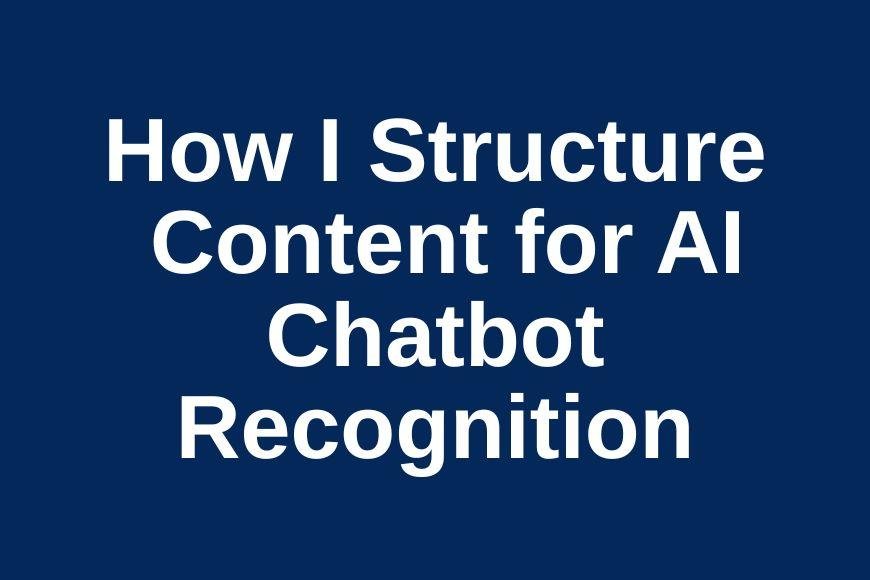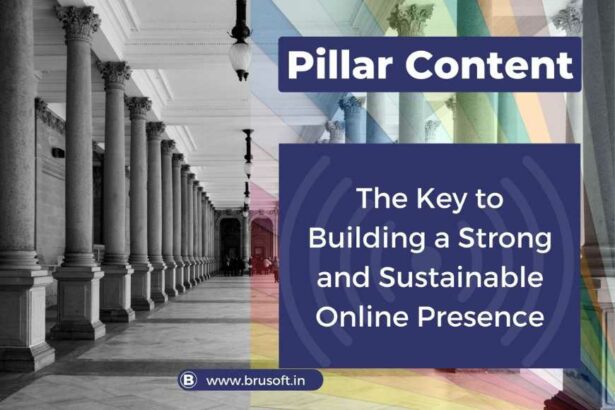AI isn’t science fiction anymore—it’s here, and it’s changing the game in how content is found, understood, and ranked online. Whether it’s ChatGPT, Google’s Gemini, or Claude, more and more people are turning to AI chatbots for fast, clear answers. That got me thinking—is my content optimized for these AI tools?
So I dove in and started experimenting. Here’s what I’ve learned about how to structure content so AI chatbots actually notice, understand, and prioritize it.
First, I Had to Understand How AI Chatbots “Think”
Unlike traditional search engines, AI chatbots don’t just scan for keywords. They care about context, clarity, and how well your content is structured. They’re powered by natural language processing and semantic understanding, which means they want your content to make sense—not just to a robot, but to a human too.
So if my content is clear, well-organized, and full of helpful context, it stands a much better chance of popping up in AI-driven responses.
1. I Embraced Structured Data and Schema Markup
This one took me a minute to fully grasp, but wow—what a difference it makes. Schema markup is basically a way to label parts of your content so AI can instantly understand what’s what.
I use structured data to highlight:
- FAQs
- How-to guides
- Product features
- Customer reviews and ratings
Google’s Structured Data Markup Helper and Schema.org made it a breeze to implement.
2. I Started Writing More Clearly and Concisely
I used to write in long, elaborate paragraphs, thinking it made my content sound more professional. Nope. AI likes clarity. So now I keep it short and sweet:
- Sentences are simple
- Paragraphs stay under 3–4 sentences
- I sprinkle in bullet points and numbered lists whenever it helps
Not only does this make AI happy—it makes my readers happy too.
3. I Write the Way People Talk
Chatbots like ChatGPT are trained on natural language. So I shifted my writing to sound more like everyday conversations.
That means:
- Turning headings into questions
- Using Q&A formats
- Including long-tail phrases and conversational keywords like:
- “How can I improve my SEO for AI?”
- “What does schema markup do?”
4. I Focus on Semantic SEO
Instead of obsessing over single keywords, I think about the intent behind search queries. This means:
- Using synonyms and related terms
- Organizing with meaningful subheadings
- Covering the topic in-depth so AI sees me as an authority
5. I Use Keyword-Rich Headings That Actually Make Sense
Headings aren’t just for human skimming—they guide AI, too. So I always:
- Naturally include keywords
- Write subheadings that clearly explain the section
- Use FAQs as headings when it fits
6. I Build Out Content Clusters
This strategy seriously leveled up my content game. I create a pillar post around a core topic, then write supporting posts that link back to it.
It looks like this:
- One detailed pillar page
- Several related blog posts
- Internal links that connect everything
This structure shows AI that I’m an expert on the topic—and it rewards me with better visibility.
7. I Optimize My Images and Videos for AI
Multimedia is great, but only if AI can understand it. I make sure every image and video is AI-friendly by:
- Writing descriptive alt-text
- Adding meaningful captions
- Giving videos clear, keyword-optimized descriptions
8. I Format Everything for Maximum Readability
AI bots love clean formatting. So I break things down into digestible pieces:
- Bullet points and numbered lists
- Bolded key phrases
- Short paragraphs
- Clear subheadings every few sections
9. I Run My Content Through NLP Tools
Natural Language Processing tools help me fine-tune for clarity and flow. Some of my go-tos are:
- Grammarly (for polishing grammar and clarity)
- Hemingway (for cutting fluff and getting to the point)
- SurferSEO and MarketMuse (for semantic optimization)
10. I Link Smarter—Both Internally and Externally
AI needs to understand how all the content on my site connects. That’s where linking comes in.
- I link related pages together internally
- I reference credible external sources
- I make sure the anchor text actually describes the link
It helps bots and users alike navigate my site more effectively.
Real Brands Doing It Right
I’ve learned a ton by watching the pros:
- HubSpot nails structured data and topic clusters
- Neil Patel writes in a super conversational, Q&A style
- Amazon uses schema markup like a champ on product pages
How I Measure What’s Working
To see if my AI optimization is actually paying off, I track:
- Search traffic and keyword impressions
- Google Search Console data
- How my content appears in AI tools like Perplexity or Bing Copilot
This keeps me sharp and helps me adjust when needed.
Final Thoughts: AI-Ready = Future-Ready
Optimizing for AI chatbots isn’t just another SEO trend—it’s where everything’s headed. By focusing on clarity, structure, and semantic richness, I’ve seen my content get better visibility in AI search responses.
If you’re serious about staying ahead, now’s the time to make your content chatbot-friendly. I’ve done it—and I can tell you, it’s absolutely worth it.





